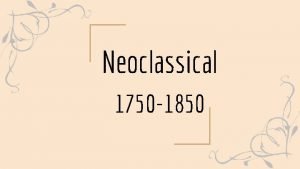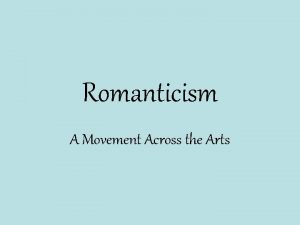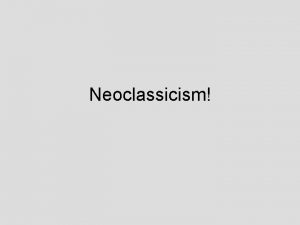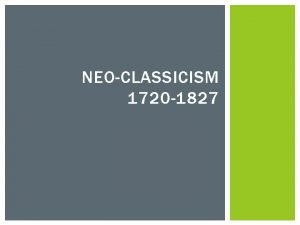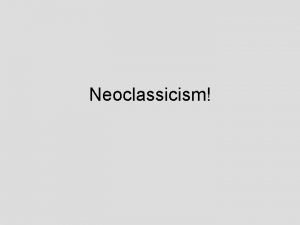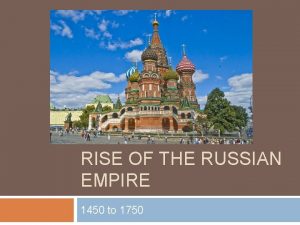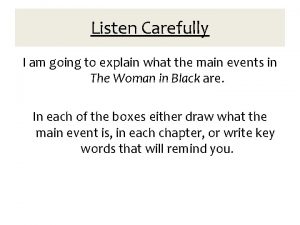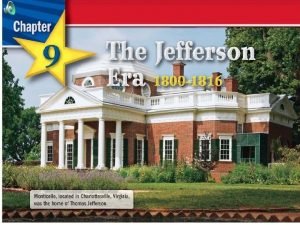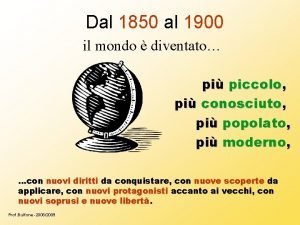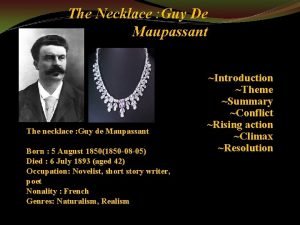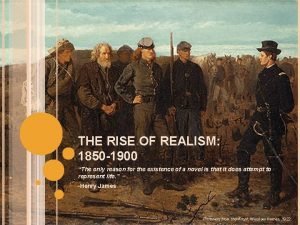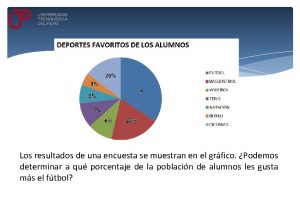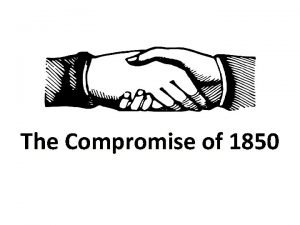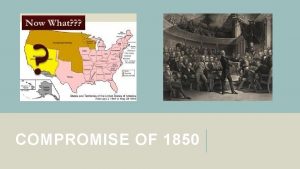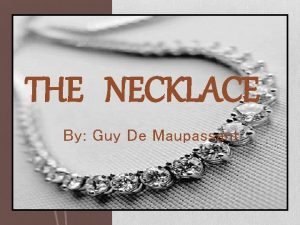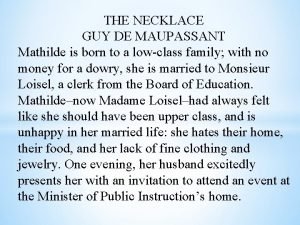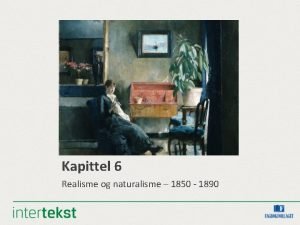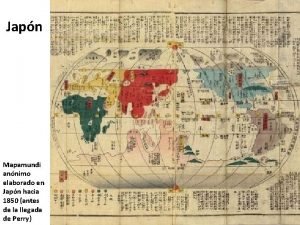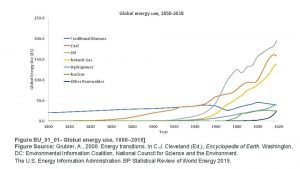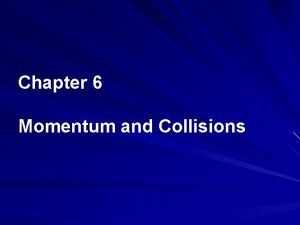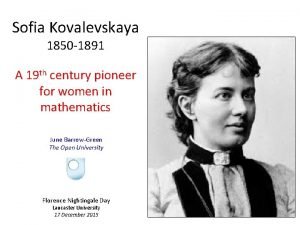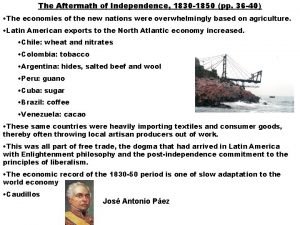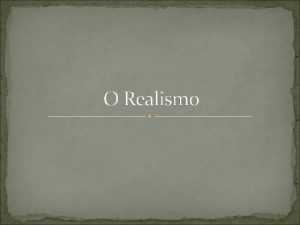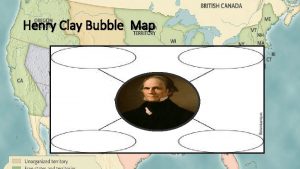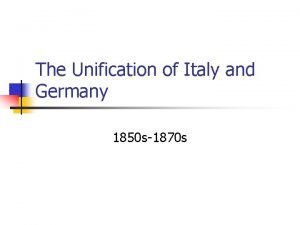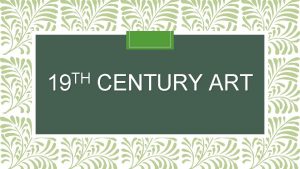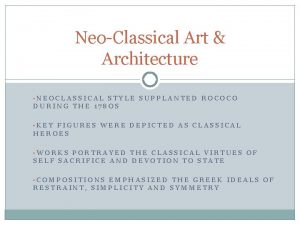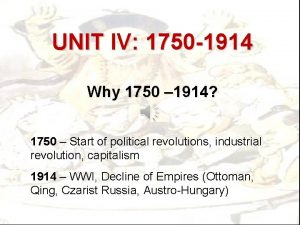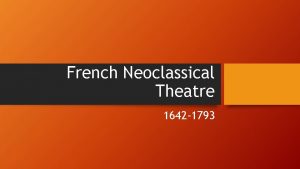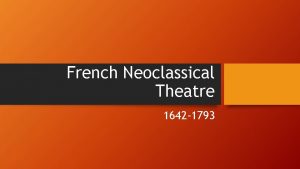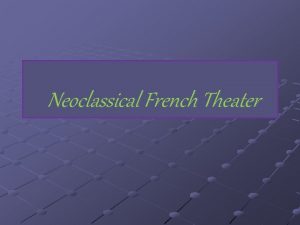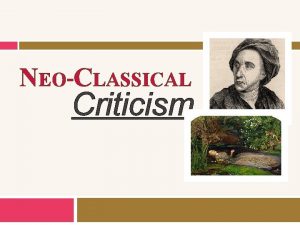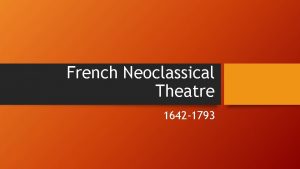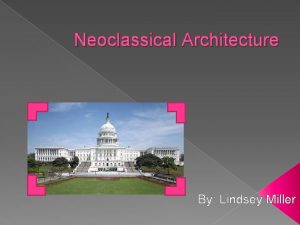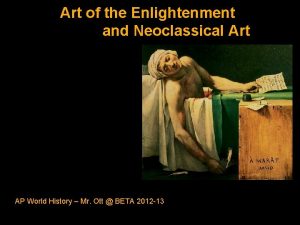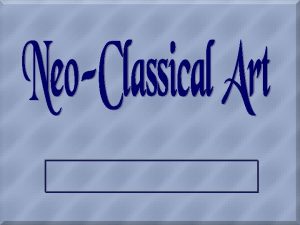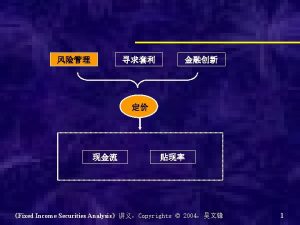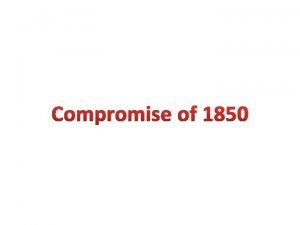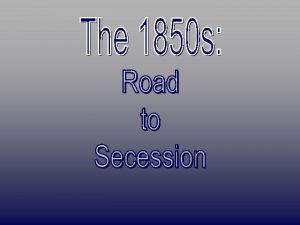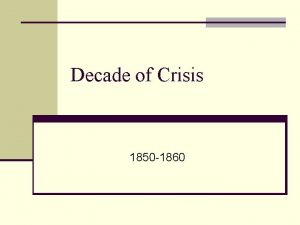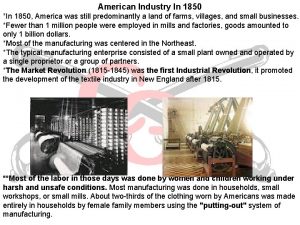Neoclassical Art 1750 1850 Showed a return to





























- Slides: 29



Neoclassical Art • 1750 -1850 • Showed a return to more traditional times • Characteristics: – Based on Greek and Roman Art – Showed Heroic scenes from or inspired by history – Figures look idealized or perfect

Neoclassical Art Characteristics: – Bodies are draped in togas, or in formal, elegant clothing, or are nude – Faces are often calm, without emotion – Brush stokes tend to be smooth, barely visible

Neoclassical Lit. /Music Characteristics: – Stresses the world’s harmony and order – Presents a logical and balanced view of human nature based on reason • Music – Mood is moderate, does not describe extreme emotion – Melody is repeated and does not reach extreme high or low


Romantic Art • 1800 -1850 • Showed a return to nature • Imagination and emotion over reason and intellect • Characteristics: – Scenes of family, nature, heroism – Nature can be calm or stormy – Emphasis on expanse of sky – People in landscape are usually small

Romantic Art • Characteristics: – Faces show inner thoughts and emotions, such as fear, anger, love, and hope – Colors are natural, muted, and soft and show a lot of natural light

Romantic Literature • Characteristics – Stresses human emotions over the rational mind – Shows wild imagination and strong emotions – Common themes are heroes, childhood, the past, and passionate love

Romantic Music • Characteristics – Mood is emotional – Wide variety of rythyms and instruments express great sadness, joy, or passion – Melody is dramatic, volume may change suddenly, – May use very high to very low prejudice


Realist Art • 1830 -1900 • Shows life as it really is • Painting Characteristics – Based on details of daily life – Scenes of common people at work – Figures dressed in daily, casual, or work clothing – Human body is not idealized – Faces do not show strong emotions – Attempt to paint light as it really looks

Realist Literature • Literary Characteristics – Describes the hardships of daily life and criticizes the greed and bad manners of the middle class

Realist Music • Music Characteristics – In opera, mood changes with a scene to imitate real-life situation of everyday characters – Melody imitates human speech and voice and conveys realistic emotions

Childe Harold’s Pilgrimage Joseph M. W. Turner 1832

The March of the Weavers Kathe Kollwitz 1897

The Apotheosis of Homer Jean-Aguste-Dominique Ingres 1827

Liberty Leading the People Eugene Delacroix 1830

Women Ironing Edgar Degas 1884 -1886







Death of Socrates Jacques-Louis David 1787



 Apotheosis of homer neoclassical
Apotheosis of homer neoclassical Marat artist
Marat artist Romanticism vs neoclassicism
Romanticism vs neoclassicism Characteristics of neoclassic art
Characteristics of neoclassic art The oath of the horatii characteristics
The oath of the horatii characteristics Neoclassical definition
Neoclassical definition Russian empire 1750
Russian empire 1750 Nethinim
Nethinim Hatchet chapter 5 answers
Hatchet chapter 5 answers Listen carefully i'm going to give you
Listen carefully i'm going to give you The election of 1800 showed that
The election of 1800 showed that A tv reporter showed this graph and said
A tv reporter showed this graph and said Scoperte scientifiche dal 1850 al 1900
Scoperte scientifiche dal 1850 al 1900 The necklace short summary
The necklace short summary Realism 1850 to 1900
Realism 1850 to 1900 Desarrollo de ejercicio
Desarrollo de ejercicio Compromise of 1850
Compromise of 1850 Compromise of 1850
Compromise of 1850 Who created the compromise of 1850? *
Who created the compromise of 1850? * The necklace plot
The necklace plot Matilda was born into a family of
Matilda was born into a family of Naturalismen i norge
Naturalismen i norge Mapamundi 1850
Mapamundi 1850 1850+250
1850+250 Types of collisions
Types of collisions Charles palabino
Charles palabino 1850*36
1850*36 Entre 1850 e 1900 surge nas artes europeias
Entre 1850 e 1900 surge nas artes europeias Explain the compromise of 1850
Explain the compromise of 1850 Where was prussia in 1850
Where was prussia in 1850

